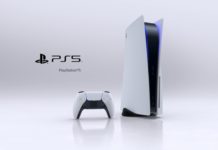What would
Metal Gear Solid be without stealth? What would it be without its intense
realism, its seamless gameplay, and its unrivaled attention to every detail?
What kind of a game would we be playing if Metal Gear Solid didn’t have an
intriguing story with one of the coolest lead characters ever made? What if
the voice acting wasn’t top-notch? What if the dialogue wasn’t memorable –
just cheesy?
Then you’d
probably be playing Winback 2: Project Poseidon. Winback 2 takes a part of the
Metal Gear Solid formula (duck-and-cover, peak-over-walls-and-shoot gameplay)
and discards the rest. Who needs that other stuff anyway?
That’s the
beginning of Winback 2’s mistakes.

Few story
details are presented at the start of the game. The opening sequence consists
of a blurry CG face that slowly comes into focus. We soon find out that the
lead character, Craig, is filled with guilt. He’s done something awful and
can’t bear to look in the mirror. It’s a shame the characters are never
developed to the point where we could appreciate and understand that guilt,
and eventually find a way to forgive him. Nope, not in this game. It doesn’t
make you care one way or another.
Before I
delve into the dark and dreary, let me tell you about the game’s brighter
moments. The story sequences are short and may be skipped. When you draw your
weapon (by holding the left shoulder button), the camera switches to an
over-the-shoulder view. Playable characters Craig, Nick and Mia can lean up
against walls, peak over them, and shoot enemies right in the face. In the
arm, the chest, anywhere you feel like targeting.
You have to
press a button to lean – it’s not automatic. I wasn’t too bothered by it at
first, but there are times when you need to leave the wall quickly. Hitting
the X (wall release) button doesn’t always work the first time you press it.
The only alternative is to push down on the left stick, and it’s not foolproof
either.
But let’s
hold on a minute. I said brighter moments. Winback 2 scores points for
its influential mission concept. Missions involve two playable characters.
Both take different routes (A or B) to accomplish their goals. They start the
mission at the same time and eventually cross paths, giving the first
character the chance to influence the one you’ll be playing next.
Suppose
you’re playing as Craig and you run into a series of lasers. The lasers
themselves are harmless, but touching one will trigger a series of explosives
that are guaranteed to leave a permanent scratch. If Craig can find and blast
the right switch, the lasers will disappear, clearing the area for when Nick
arrives. There are times when you’ll help each other in a gunfight, unlock
doors, and anything else that may aide your comrade.
This clever
concept isn’t new, but few games have tried it given how hard it is to
accomplish. Winback 2’s implementation is rather simple, as are the missions
and objectives, which ultimately result in the same goal: kill the bad guys,
flip a switch, and save all hostages.

Don’t plan
on taking all day to figure this stuff out – each mission is timed, and
several of the main objectives are given a short clock.
My final
words of Winback 2 praise will go to the body highlighting system. When you
draw your weapon, specific parts of the enemy within your crosshairs become
highlighted. This lets you line up head, arm, leg and chest shots quickly and
efficiently. The collision detection is mostly reliable, but definitely not
perfect. In fact, its technical mistakes work in your favor – I managed to
take out a few thugs while my weapon was aimed at a steel bar. The bar, which
was part of the room’s structure, stood directly in front of my opponent.
Somehow the game missed that, sending the bullet right through my enemy’s
chest when it should’ve been stuck in the object that stood in its way.
And that’s
not all it missed. I figure if you’re going to copy a great game like Metal
Gear Solid, you might as well copy everything. This game must disagree. It’s
devoid of destructible objects, save for a few designated crates and barrels.
I came across several vases, toolboxes, computers, light fixtures, etc., none
of which could be taken out.
Winback 2’s
weapon offering is pretty disappointing. You get handguns, machineguns, a
shotgun, a rocket launcher, and a few others that look and feel like cheap
knock-offs of the real thing. Most enemies drop a weapon after being shot,
which doubles as an ammo clip when you’ve already acquired that weapon. The
sad (and excruciatingly painful) thing is that you can’t move while
reloading. It only takes about two or three seconds to do so, but that’s
all an enemy needs to open fire.
Taking hits
means losing life and having to hear your characters pretend to be hurt.
Various moans and groans follow every gunshot. One of Mia’s reactions sounds
like a death sigh, despite the fact that she’s still standing. Intentional or
not, it’s as cheesy as a Goldfish cracker.
Lucky for
Mia she won’t have to take many hits. The AI is anything but intelligent. I
was able to reload in front of my enemies – on more than one occasion –
without getting shot. They’d stand there and wait for me to finish. As much as
I appreciated the break, I couldn’t help but feel cheated. Why not kill me
when they had the chance? Why not force me to play with a bit more stealth?
But see,
that’s another area where Winback 2 fails. If an enemy has his back to you, it
really doesn’t matter how slowly you walk up to him because he’s not going to
notice. There isn’t much of a reason to sneak up behind someone when you can’t
snap their neck Solid Snake-style (this game is rated Teen; MGS is rated
Mature). Headshots can be dealt from afar as easily as they can be dealt up
close.
When enemies
are tough they’re cheap. They’re not sneaky, clever, or show any signs of
intelligence. In fact, I died more fumbling with the controls than I did by
the hands of an enemy that was truly lethal.
Auto-targeting lets you snap onto enemies for quick kills, but there’s a 30%
(at least) failure rate. If a large object is nearby, or if the enemy is too
far away, the auto-targeting may not work at all. Or it might snap you into
the wrong direction. The crosshairs don’t move very quickly, nor do they feel
as natural as that Hideo Kojima game Winback copies. If I’m snapped a few
inches away from my target, how quickly do you think I can react when I didn’t
expect that to happen? I expect to snap onto my enemy, or at least I did for
the first few missions. Then I came to terms with the fact that this game was
going to defy me at every turn.

Winback 2’s
missions consist of three to four base objectives that are repeated throughout
each level. (1) Clear the room of all enemies. I can’t argue much
there, it’s an appropriate request. What else was I going to do with all this
ammo lying around?
(2) Flip
a switch. I know that, since the dawn of Wolfenstein, switches have been a
commonly used barrier in keeping players from walking through every door with
ease. It’s not inappropriate, but lacks cleverness.
(3)
Rescue hostages. All you have to do is avoid shooting them. Accidental
shots can lead to point penalties, but hostages generally keep their heads
down. Another visual cue: they don’t have weapons. To free one, walk up to the
frightened hostage after all of the enemies in the room have been taken out.
(4) Boss
battles. Obnoxious, elaborate psychos with a thirst for speed and
repetitive attack patterns. Their health meters are larger, resisting more
damage than the random thug.
You’d be
hard pressed to find a good game that doesn’t have these elements. When mixed
with other ideas they can be highly effective. When left to carry the game on
their own, consequences are impossible to avoid.
Missions are
short but boring and at times frustrating. Orders are given here and there,
one of the most common being: "Search everywhere before moving on." There
aren’t any check points to be found – if you die, you’ve got to start it over
from the beginning. Another disadvantage: characters share one health meter.
Corridors
and dozens of doors, crates, and boxes are all you ever see. Winback 2 is a
world of familiarity. If you see it in the first 10 minutes, you’re likely to
see it again in the next 10 minutes. Repeatedly. Don’t be confused or think
you’re going crazy – don’t mistake what you’re seeing for deja vu. Every room,
every hallway, every single area you explore is repeated at least once. You
might notice a different box the second time through. Maybe the door is in a
different location. It’s the same room regardless, and it doesn’t take long
for your eyes to get sick of staring at it.
The
unfortunate reality is that, at the end of the day, a been there, done that
experience isn’t worth much. There is a little fun to be had with this game,
but not enough to warrant a purchase. I’m happy to see that the camera issues
have been worked out since the preview build. The tedious gameplay, however,
remains. Imperfect aiming and a random auto-targeting system are unacceptable
in a game where shooting is your primary objective.
|
|
Gameplay: 4.8
Winback 2 won’t
win back fans of the original. It’s somewhat clunky, repetitive, and thin on
excitement. I suppose it would be fun having to duck and cover every five
seconds if that wasn’t all there was to it. But after leaning up against the
200th wall in the 200th corridor, I couldn’t help but want something more.
Boss battles, which have had high expectations since video games introduced
them in the 80s, did nothing to invigorate the experience.
Graphics: 4.0
The graphics are
as generic as the environments, which repeat themselves to the point that
you’d lose track of where you were if the game weren’t so linear. That’s
another problem – linearity. Missions are generally short, and when they’re
not they’re just cheap and frustrating. Death means having to re-start that
part of the mission with whichever character you were playing as. Check points
are nonexistent.
Sound: 3.0
A bad idea from
the start – one sub-par sound that lasts about three seconds, and repeats
itself consecutively for the duration of the mission. There are different
repetitions for each of the missions, as if that makes a difference. The
voice-overs aren’t the worst I’ve heard, but the Metal Gear Solid knock-off is
one of the weakest, most blatant rip-offs I’ve ever encountered. When a
character dies, it is sometimes followed by his comrade saying, "Craig!
Craaaaaaaig!"
Difficulty: Easy
Artificially
unintelligent. Winback 2’s enemies are dumber than a guy who asks, “Am I
smart enough to use a ‘Windows For Dummies’ book?” When your weapon is fully
loaded they’ll act like a deer in headlights, shooting nowhere or not shooting
at all. It doesn’t take the player two seconds to realize they have an easy
opportunity to get some quick kills.
Concept: 6.0
I love the idea
of influential missions, where the first character you play as can greatly
affect the mission for the second character, who are both there during that
timeline but are played separately. I also like the idea of highlighted body
parts – it’s an excellent idea for an arcade-style shooter (which Winback 2
almost was). The rest of the game, however, seriously lacks any form of depth,
polish, or originality.
Multiplayer: 4.0
A cumbersome
collection of clunky dodge-and-shoot action. Little of which packs real,
hard-hitting action; none of which packs replayability or short-term
excitement.
Overall: 4.8
Metal Gear Solid
without stealth or any of its "solid" gameplay, graphical or story elements.
Winback 2 presents some interesting concepts that I would have loved to see
succeed. Maybe the series can finally get it right in its third installment.
Whatever the future may hold, one thing is for certain: this is one lackluster
game.









